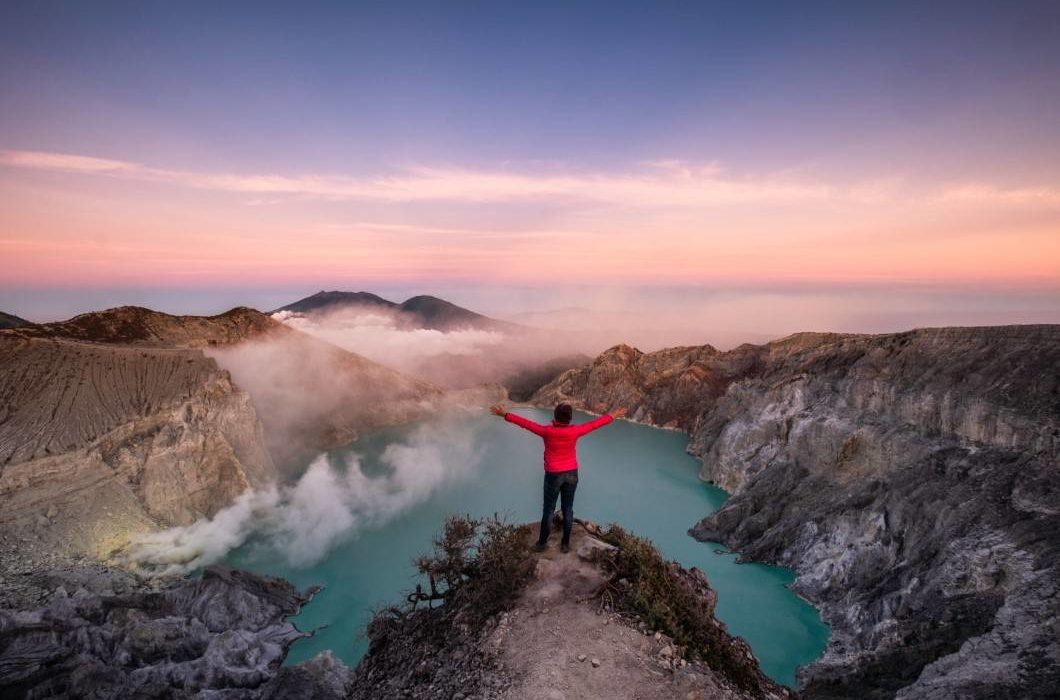
You might also like:
Shapely cones, deep craters, bubbling lava: volcanoes are fascinating to people. They are thus very popular travel destinations. However, is volcano tourism safe for the average traveler and are there any precautions necessary beforehand?
When the volcano Gunung Agung sent huge clouds of smoke into the sky in 2017, thousands of tourists were stuck in Bali, with the international airport of the island closed. Big tourism operators offered their customers free rebooking and cancellations. The volcano messed up the travel plans of the island guests.
Volcanoes are both a threat and a sight. They offer travelers an unparalleled natural experience – or paralyze the air traffic, cover the landscape with ashes, destroy villages. A volcanic eruption is a life-threatening spectacle.
Worldwide there are about 1500 active volcanoes. Due to the global expansion of tourism, the risk of travelers being affected by this has become much greater. There are around 450 active volcanoes only in the Pacific Ring of Fire – and 127 in Indonesia alone.
But the risk is worldwide, even in Europe. An example is Etna in Sicily. In December 2018, there were several small eruptions and quakes. At the same time, the volcano attracts many travelers, with bus tours and cable cars going up to the volcano crater.
Responsible volcanic tourism is important. Many foreign offices point out volcanic risks in travel and safety information for corresponding countries.
Often it depends on the region. The recent eruption of the volcano Kilauea in Hawaii – one of the most active ones in the world – caused lava flows and damage on the Big Island. But those who wanted to spend their holidays on another island of the archipelago could do so without restrictions. In fact, the risks of tourists being affected are relatively small – in relation to other dangers.
Sometimes there are scenarios that not only affect travelers on the ground. The Eyjafjallajökull volcano in Iceland paralyzed all air traffic in northern and central Europe during its outbreak in 2010 for several days.
Nevertheless, volcanoes are still popular tourist destinations in Iceland. “We recommend discovering the volcanoes with a guide who can provide professional knowledge, history, and interesting facts,” advises Sigridur Dogg Gudmundsdottir from Visit Iceland.

Volcano trekking is also a popular attraction outside of Europe. This is especially the case in Central and South America. In the Andes, there are numerous volcanoes higher than 5,000 or even 6,000 meters that are popular among adventure travelers. In Chile alone, there are 80 active volcanoes. For example, the Cotopaxi in Ecuador is especially shapely and has been active for thousands of years.
Why are volcanoes so fascinating? “They make the dynamics of the planet tangible,” says German geologist Thomas Walter. “You cannot see with the eye that a terrestrial plate is moving slowly – but the volcanic eruption is quite visible.” No wonder, volcano tourism is on the rise around the world. Every tourist, however, should take the right precautions.
Source: tourism-review.com
